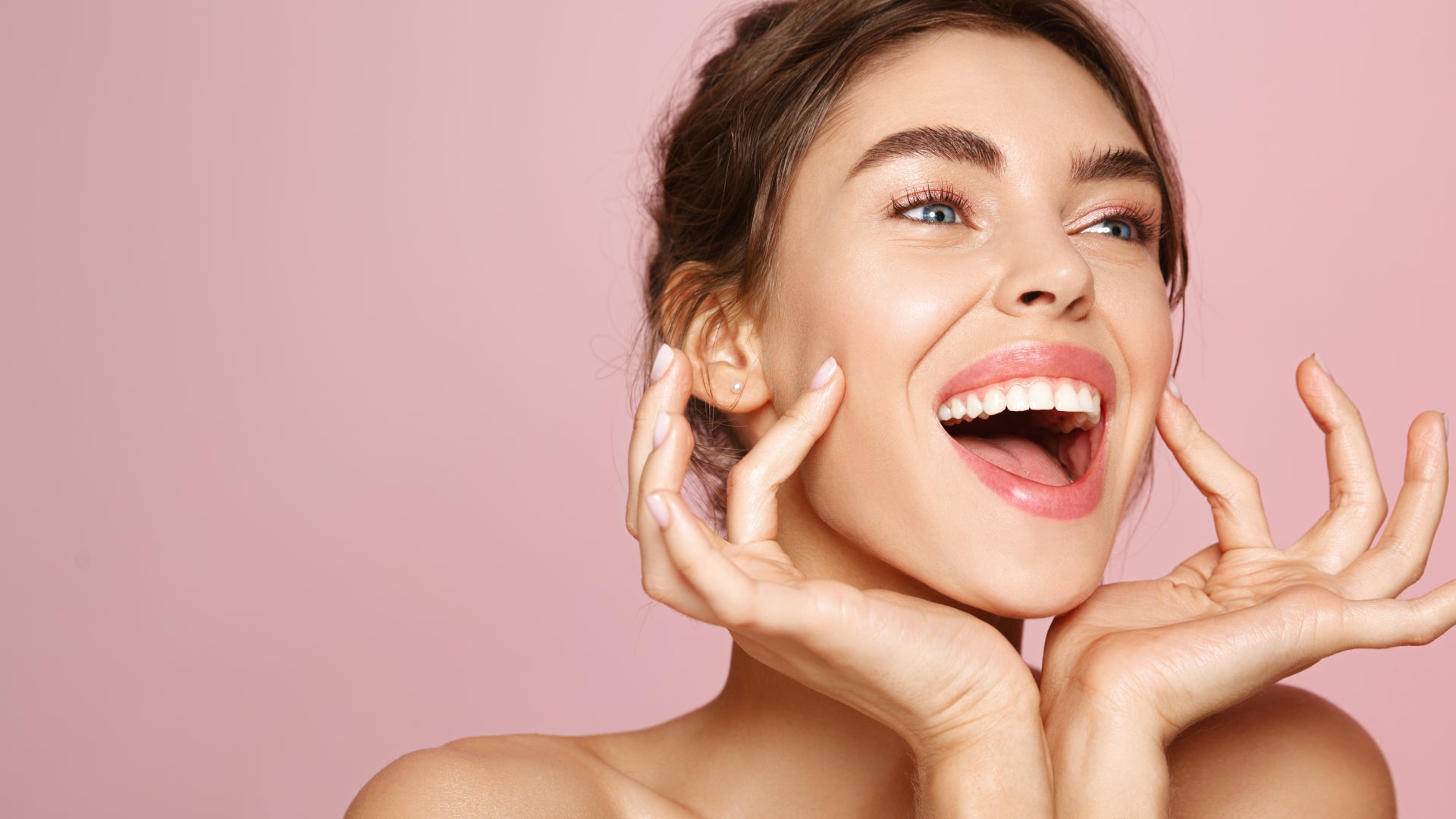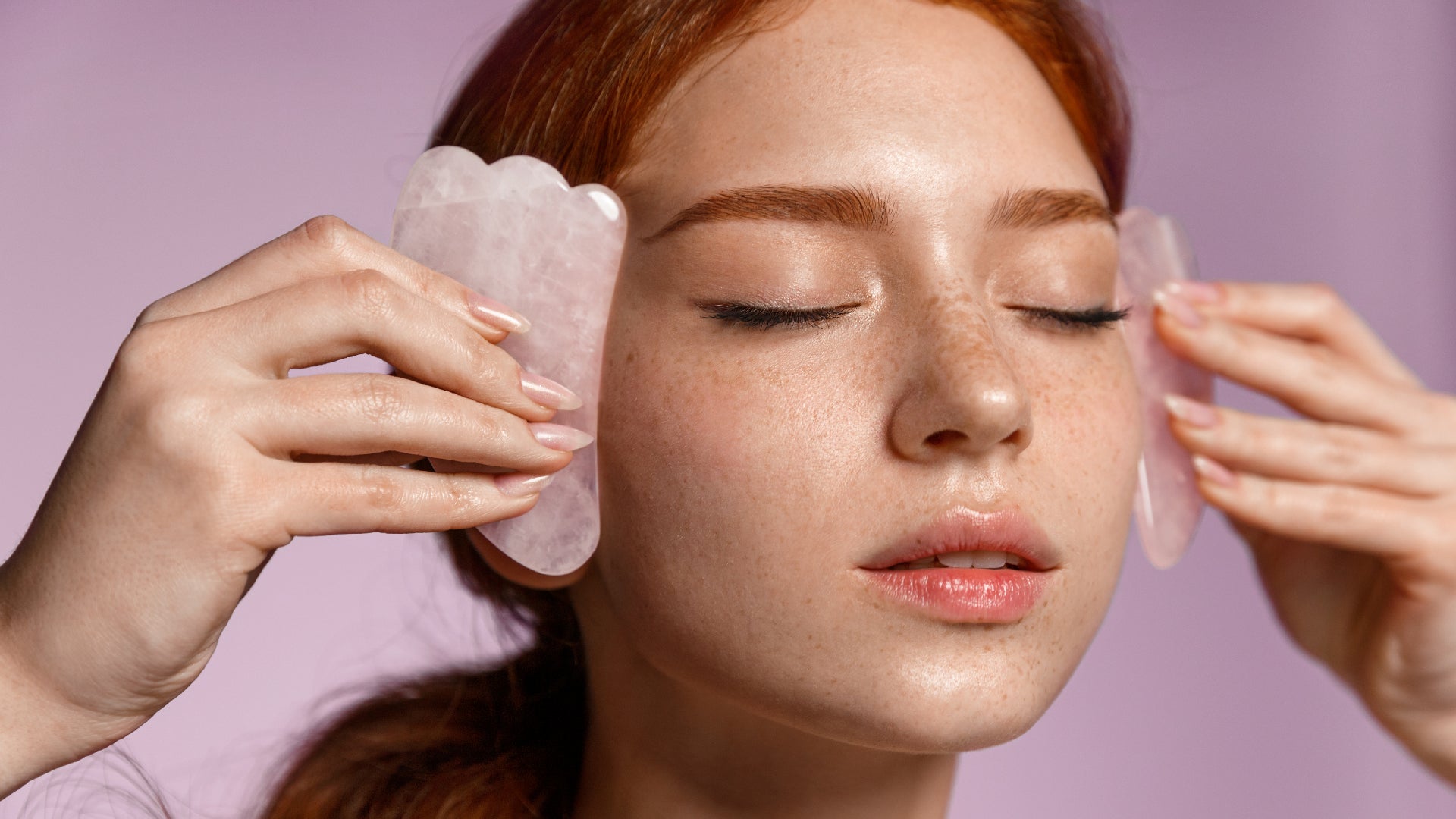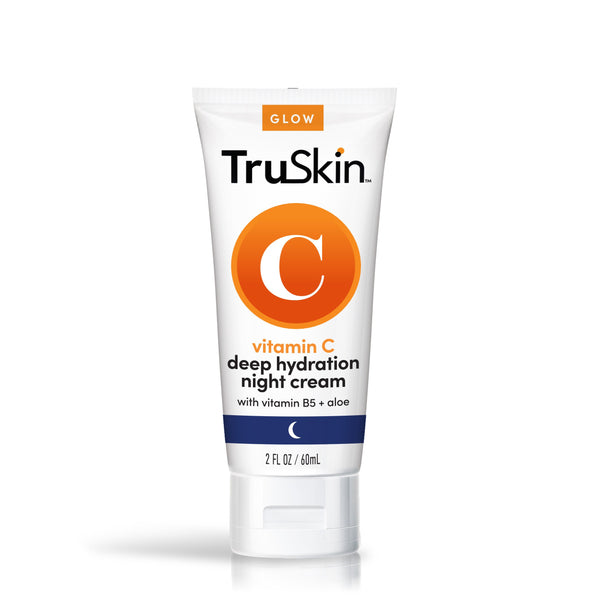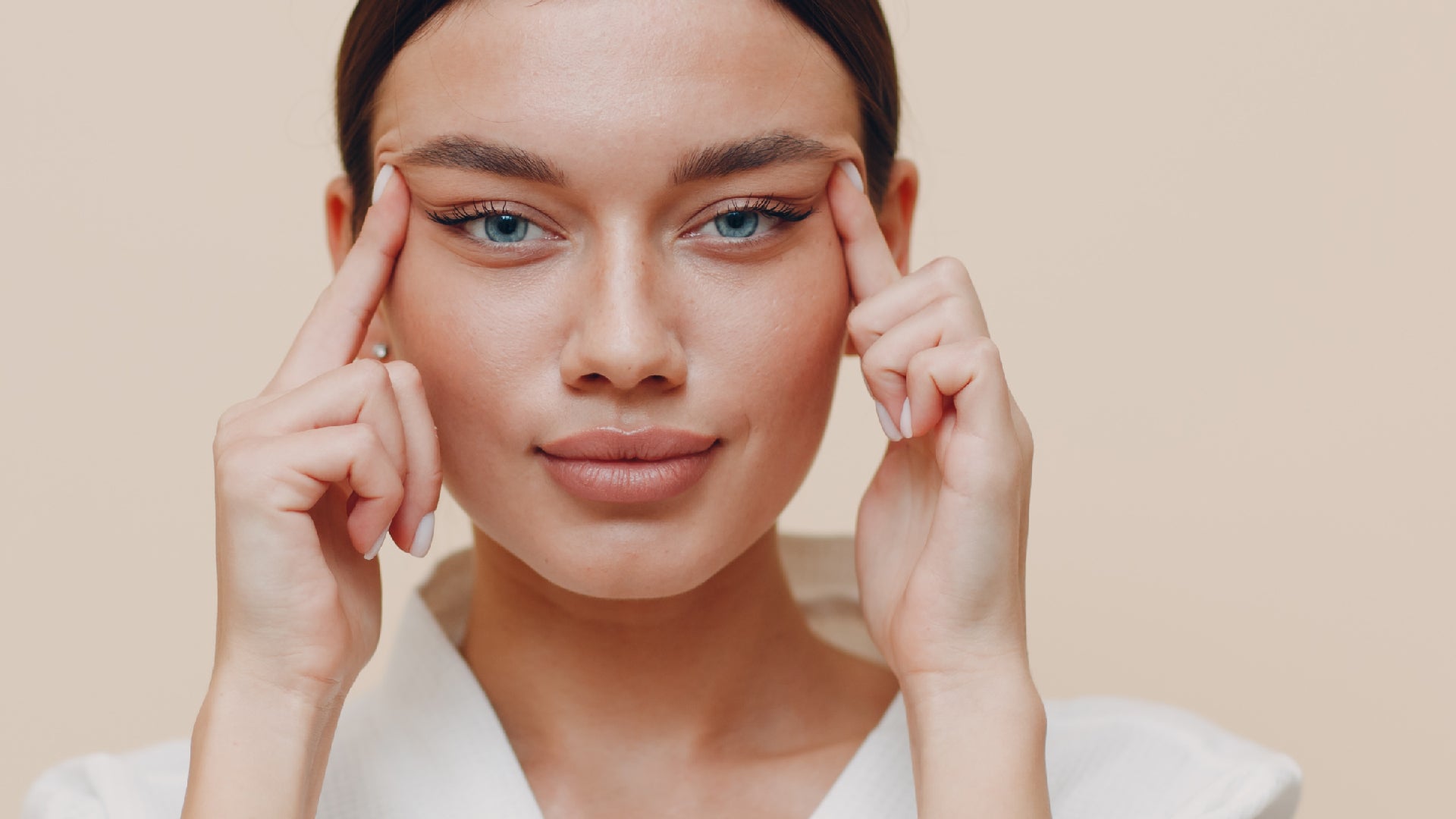
True Radical Honesty From Our Community
What To Do If You Hate Those Fine Lines Around Your Lips
Read MoreAdvice for all of your skin care needs
- all articles
- Acne
- Anti-Aging
- Collagen
- Combination Skin
- Company Announcements
- dry skin
- Exfoliation
- Eye Care
- Facial Redness
- Grooming
- Holidays
- Hyaluronic Acid
- Niacinamide
- Oily Skin
- Retinol
- Sensitive Skin
- Skincare
- Skincare Guide
- Skincare ingredients
- Skincare Routine
- Skincare Tips
- Sun Protection
- Toner
- Vegan Skincare
- Vitamin C
- view all
- Acne
- Anti-Aging
- Collagen
- Combination Skin
- Company Announcements
- dry skin
- Exfoliation
- Eye Care
- Facial Redness
- Grooming
- Holidays
- Hyaluronic Acid
- Niacinamide
- Oily Skin
- Retinol
- Sensitive Skin
- Skincare
- Skincare Guide
- Skincare ingredients
- Skincare Routine
- Skincare Tips
- Sun Protection
- Toner
- Vegan Skincare
- Vitamin C
-
Squalene, squalane… tomayto, tomahto. Actually, stop right there, because that one letter makes more of a difference than you might think. (Just to be clear, we’re talking about the skincare ingredient, not your favorite salad ingredient…)
By now you’re probably well versed in the likes of retinol, tretinoin, peptides and hyaluronic acid. But squalene and squalane? These two are a whole different ballgame. For starters, the words look and sound almost EXACTLY THE SAME, but the ingredients themselves? Not so much. Now, if we didn’t know better, we’d think those science bods were doing everything in their powers to confuse us. But they have better things to do than worry about confused skincare fans wondering what on earth squalene and squalane are...
And thankfully, that’s why we’re here.
So, what’s the connection between squalene and squalane and how are they different? OK, here we go…
What Is Squalene With An ‘E’?
In the red corner we have squalene, a naturally-produced polyunsaturated hydrocarbon that makes up around 12-13 percent of your skin’s sebum. Don’t worry about the polyunsaturated thingamajig bit. Just know that squalene is a lipid found in the oil that helps keep your skin moisturized and hydrated by preventing transepidermal water loss (TEWL), as well as protecting it from environmental damage. So, yes, it’s kind of important. Actually, it’s really important.
Like most of the good stuff in your skin (think collagen, hyaluronic acid and co.), your levels of squalene deplete with age, which is why skin generally feels drier, rougher and more dehydrated after the age of around 30. And this is where skincare steps in, hoping to replace all the squalene your skin loses with topical squalene that’s been sourced by other means.
This is where the problem lies. Unfortunately, as a skincare ingredient, squalene is rather unstable, meaning it oxidizes and becomes pretty useless when it’s exposed to air. Another black mark is that, historically, it was harvested from shark liver oil because this particular squalene was shown to closely mimic our own. Thankfully, it can now be sourced from plants like olives, rice bran, sugar cane and wheat germ, but still, its instability and short shelf-life remain.
What Is Squalane With An ‘A’?
The reason squalane and squalene are so alike is because the former is a derivative of the latter. For fear of getting too sciencey on you, squalane is a hydrogenated type of squalene. Hydrogenation means hydrogen has been added to it to make it less likely to react with oxygen. This process not only makes squalane a much more stable emollient than squalene, but it also creates a softer, lighter and more user-friendly version of this skin-moisturizing lipid.
More good news: squalane is just as effective as squalene. Group hug.
What Are The Benefits Of Squalene And Squalane?
Both have similar moisturizing benefits, and they’re ideal for all, as they’re very well tolerated by most skin types. They’re great for dry and mature skin, but equally as effective if you have oily or acne-prone skin. Because they help heal and fortify the skin’s barrier function and reduce TEWL, they’re also often a go-to for relieving symptoms associated with conditions like psoriasis and eczema.
So, As A Skincare Ingredient, Is Squalane The Best Option?
Yes and no. For sure, squalane is more user-friendly and has a longer shelf-life, but it can still be sourced from shark liver oil, so don’t think it’s always the innocent party here. Some people believe squalane is only ever derived from plants, while squalene is the bad guy that’s always harvested from deep sea sharks. Not true. To reiterate, they can both unethically come from sharks and, unless a skincare company tells you otherwise, you should always presume the worst. Why so? Because a.) plant-derived squalene and squalane are around 30 percent more expensive to source and manufacture than the shark alternatives, and b.) unfortunately, the whole sorry business is, as yet, unregulated. Sigh.
How To Make The Right Choice
Always scrutinize your products’ ingredient lists and look out for phrases like ‘100 percent plant-derived’, ‘vegan-friendly’, ‘cruelty-free’ or ‘vegetable-based.’ And if it’s still not clear, contact the manufacturer to demand full disclosure. No BS.
Better yet, stick with us! We use sustainable squalane extracted from olive oil across all our skincare products because we care about the world we live in and don’t mind spending a little extra in order to look after our oceans and climate. Check out our Hyaluronic Acid Eye Cream and Vitamin C Super Serum+ and you’ll see ‘olive oil squalane’ sitting right there among all the other awesome, plant-powered ingredients.
Simple solution, right there.
Squalene Vs Squalane: What’s The Difference?
read more -
Ramp up your skincare tools by knowing exactly which skincare products to use with them… and when.
These last few years have seen a massive rise in sales of at-home skincare tools and treatments that give you all the benefits of a spa-like facial without leaving the comfort of your own home. Figures, right? For the most part of 2020 and 2021 your home became your office, your school, your gym, even your hair salon (come on, fess up if you attempted a bad trim/root touch-up last year?). All this meant that popping to your favorite dermatologist or beauty therapist for an hour-long facial simply wasn’t an option. So, you started buying stuff to use at home that could help recreate the treatments you’d become accustomed to. And it turned out, most of you quite liked being your own beauty boss. Some of you also became pretty good at using your new skin tool BFF.
However, it’s not easy to transform yourself into a whizz at professional-style home treatments. So, if you’re yet to figure out how to use your gua sha or derma roller alongside your favorite skincare products, here’s our guide to getting it right.
The At-Home Skincare Tool: Cleansing Brush
What It Does: Sonic cleansing brushes and tools use powered bristles that vibrate and pulsate over the surface of your skin. Some use circular motions while others move back and forth, but whatever the technology, this repetitive, time-controlled movement offers similar results: to deeply cleanse your skin, break down dirt and oil, and keep your pores clean and clear. The massaging action has also been shown to help promote a toned, lifted and firmer-looking complexion.
How To Use: Cleansing brushes are extremely simple to use. Moisten your face with lukewarm water and apply cleanser all over your skin – you might need a little more than normal so don’t be shy. Next, grab your brush and work it over your face for around a minute. Anything more than light pressure will prevent the bristles from moving properly, however, so go easy. Rinse, dry and you’re done. Oh, and we don’t recommend using them more than once a day. Too much, people. Way too much.
The Best Skincare To Maximize Results: Of course, a great face wash is your go-to here and we think our Vitamin C Brightening Cleanser is the absolute bomb because it’s gentle enough for most skin types and formulated with vitamin C and other potent antioxidants for bright, radiant skin. Exfoliating scrubs should be avoided as these could over-stimulate your skin and cause irritation, dryness and sensitivities.
The At-Home Skincare Tool: Derma Roller
What It Does: Derma rollers are used in microneedling treatments. Microneedling works by using tiny, high-speed needles to produce tiny puncture wounds in your skin. This creates a controlled injury which triggers collagen and elastin production, nudging your skin to renew itself. By doing this, microneedling is said to help reduce acne scars, fine lines, wrinkles and even dark spots. But remember, at-home derma rollers are generally manufactured using shorter needles than the medical-grade ones used by the pros, so be patient with results.
How To Use: Shoving needles into your skin at home might sound like a crazy notion, but derma rollers can be extremely safe to use if you’re super careful and follow the instructions to the absolute letter. The first thing to remember is to make sure both your skin and derma roller are totally clean before your treatment, then mentally divide your face into four sections and gently work the roller over small areas within that section two or three times. Rinse your skin afterwards and gently pat it dry.
The Best Skincare To Maximize Results: Microneedling is a great way to help moisturizer and serum penetrate deeper into your skin. Which is good and bad news. First, the bad: microneedling can make your skin sensitive to potent, active ingredients like retinol and glycolic acid – especially if you’ve not used them before – so tread carefully with anything that could cause a reaction. The great news, however, is that microneedling will really ramp up the effects of some of your less sensitizing, more hydrating ingredients like hyaluronic acid, niacinamide, MSM and vitamin C. We recommend following a derma roller sesh with Niacinamide Facial Serum.
The At-Home Skincare Tool: Ice Globes
What They Do: Ice globes are a bit like jade rollers but, as their name suggests, they’re glass or metal wands that have balls on the ends which are designed to be kept in the fridge or freezer. Kind of like rubbing ice cubes all over your skin without the watery mess, ice globes are awesome for the eye area as their globe-like shape makes them easy to negotiate around the orbital bone. However, they’re great for soothing redness, minimizing inflammation, boosting circulation and reducing puffiness all over your face. Experts also believe they may help boost collagen to tighten and firm your skin. So, there’s that.
How To Use: These are best used in the morning to really wake up your skin and help reduce tired, puffy eyes and skin. Simply grab yours from the fridge or freezer and work it over cleansed, dry skin for 10 minutes or so. Use upwards movements to lift your skin and add radiance, or downwards strokes to encourage lymphatic drainage and reduce swelling, making sure you don’t press too hard as this could drag and damage your skin.
The Best Skincare To Maximize Results: Apply your favorite serum or eye cream before massaging to really super charge all those delicious, skin-loving ingredients. Try Vitamin C Facial Serum to help protect your skin throughout the day.
The At-Home Skincare Tool: LED Facial Mask
What It Does: Loved by the likes of Julia Roberts, Victoria Beckham and Olivia Munn, LED face masks might not be cheap, but, depending on the type of light involved, they’ve been proven to work on all manner of skin woes including fine lines, wrinkles, dark spots and even acne. They work by using waves of light (usually blue or red) to penetrate your skin and kick-start it to function more efficiently. Red light, for example, promotes collagen production so is great for anti-aging the skin, whereas blue light targets excess sebum to work on reducing acne breakouts.
How To Use: Again, they’re all different, but you basically cleanse, tone and moisturize as normal, then power up your mask, select the light you prefer (if there are options), pop the mask over your face and relax. What’s more, most masks switch off automatically after 15-20 minutes. What could be easier? Two or three times a week should be about right to give you decent results in just a few weeks.
The Best Skincare To Maximize Results: LED can cause your skin to feel a little dry to begin with so make sure you look after your skin’s barrier to prevent unnecessary water loss and help your skin stay hydrated and healthy. Vitamin C Deep Hydration Night Cream is a great shout to apply before bed as this will really enrich your skin with moisture. Perfect the night before (and after) using your mask.
The At-Home Skincare Tool: Facial Gua Sha
What It Does: Pronounced ‘gwah shah’, this East Asian therapy has been around for hundreds of years and uses a flat, smooth crystal like jade or rose quartz to scrape the skin and move energy (or chi) around the face or body. This form of massage is known to help remove a build-up of lymphatic fluids from the face and around your eyes. It also boosts circulation and relieves muscle tension.
How To Use: Unlike body gua sha therapy which is firm and can cause bruising, using it on your face requires a more gentle approach. Simply place the tool flat against your skin and use the different angles and curves of the tool to fit the contours of your face. Apply gentle pressure and use a combination of long and short strokes across the surface to stimulate lymphatic drainage and reduce puffiness. Start once a week and then build up to more frequent use as you get more into a routine.
The Best Skincare To Maximize Results: To get the most from gua sha, cleanse and tone your skin first, then apply a small amount of facial oil to reduce drag and maintain a smooth surface as you massage your skin. If you want to concentrate on puffy eyes, firstly: great idea. And secondly: apply Hyaluronic Acid Eye Cream first for awesome, eye-rejuvenating benefits.
Make The Most Of Your Skincare Tools With These TruSkin Favorites
read more -
The holiday season is over, so now's the time to say goodbye to dull, exhausted-looking skin and hello to a brand new year.
December is known for many things – cold, blustery weather; chestnuts roasting on an open fire (although who even does that!) and panic shopping for holiday gifts to name just a few. It’s a great time of year for most of us, but when it comes to your skin? Well, not so much. In fact, boozy parties and sleepless nights can ruin your skin’s mojo. So, now the festive fun is over, the last thing you want to be stuck with is sleepy skin that looks and feels as tuckered out as you feel.
While nothing beats the magical powers of eight hours of beauty sleep, there are plenty of ways to put a pep in your complexion’s step. Here are five of our utmost faves. And no, finishing off your cleansing routine with blasts of freezing cold water is not one of them. Because that’s downright torture at this time of year. And we’re not quite that mean…
1. Exfoliate Your Skin
Dead, dulling skin cells can really pile up if you’ve had little to no zzzs and your skin has lost out on its vital regeneration time. Couple this with too much partying (read salty snacks and Prosecco) and it’s no wonder the festive season goes hand-in-hand with burnt-out skin.
The best way to amp up cell turnover and improve radiance is to exfoliate your skin. And exfoliation comes in two forms: physical and chemical.
Physical exfoliation includes all the obvious stuff like face scrubs, cleansing brushes and loofahs – basically anything that requires some kind of physical movement in order for it to work.
Chemical exfoliation is just as good as physical exfoliation, and can actually be a much better choice if you have sensitive skin that gets easily irritated by abrasive scrubs and the like. Chemical exfoliators are products that contain some kind of ingredient (usually acids like glycolic, salicylic or lactic) that help loosen the bonds between skin cells to encourage them to naturally slough away more efficiently. They don't require pressure or massage, they just do the job as par for the course. Clever, right?
Try our Vitamin C Super Serum+ which not only contains salicylic acid, but antioxidants galore. Apply it to cleansed, dry skin before moisturizing to help get your party glow on.
2. Get Your Daily Vitamin C Fix
Speaking of antioxidants, they’re vital at this time of year (and any time of year for that matter. Antioxidants work by nixing free radicals caused by stress, a less-than-ideal diet, alcohol and exposure to things like pollution and cigarette smoke.
Most experts agree that the absolute queen of skincare antioxidants is vitamin C. Why’s it so great? Ha, how long have you got? Seriously though, in a nutshell, vitamin C has not only been proven to slow aging by working on free radical-induced wrinkles, but it accelerates collagen production and is a bit of show-off when it comes to warding off dull, tired-looking skin. How so? Because it inhibits wayward melanin production which is what causes dark spots and patchy skin. So, there you go.
Apply Vitamin C Deep Hydration Night Cream to cleansed skin before hitting the sack to promote healthier, brighter skin as you sleep – no effort required. Got to love that, right?
3. Exercise More
An hour at the gym is not only good for your abs and pecs, but it stimulates blood flow to your skin, providing oxygen and nutrients to your cells and helping to give your complexion a fabulously healthy glow. And if gym sessions aren’t your jam, don’t fret because anything that gets you moving and your heart rate up will take care of business nicely. A brisk walk, Zumba class, even dancing around the kitchen… all good.
4. Stay Away From Smoking (And Smokers!)
You know smoking’s bad for you. We know you know that. But let’s just have a refresher course on just how tragic it is for your skin, shall we?
There are over 4,000 chemicals in cigarette smoke, many of which destroy your collagen and elastin fibers, which, as you know, are the key players when it comes to maintaining awesome skin. Cue lines, wrinkles, puffiness and an uneven skin tone. Nicotine, in particular, causes your blood vessels to constrict, reducing blood flow and depriving your skin of all the oxygen and nutrients it needs to stay bright and healthy-looking. And yes, secondhand smoke is just as damaging to your skin, maybe even more so, because the levels of nasties like nicotine, tar, carbon monoxide and nitric oxide are at least double the numbers found in firsthand smoke. Mic. Drop.
If you ever find yourself surrounded by a bunch of smokers, counteract the damaging effects of all those collagen-destroying enzymes by applying products that contain proven ingredients to increase collagen production in your skin. Things like vitamin C, retinol, MSM and peptides are the mutt’s nuts for this. In steps Retinol Facial Serum...
5. Try Your Hands At Facial Massage
There’s nothing better for waking up your skin in the morning than by giving yourself a two-minute facial massage as you cleanse. And honestly, a few minutes is all it takes to majorly boost your circulation and encourage toxin drainage.
Apply Vitamin C Brightening Cleanser to damp skin and work it all over your face and neck, using the pads of your fingers. Sweep your fingers down your nose a few times, across your cheeks from the center outwards, up and around your forehead, then from the middle of your chin out towards your ears. Finish with your neck, using the palms of your hands to perform light strokes from the base of your neck up to your jawline.
Guaranteed Ways To Breathe New Life Into Tired Skin
read more -
Little known fact: what you eat can seriously impact your skin.
There will always be a place for chocolate lava cake and Flamin’ Hot Cheetos in our lives, but if you’re worried that your sweet tooth/savory snack addiction is ruining your skin, it might be time to make some changes to your diet. And the best way to get the job done without feeling like you’re completely torturing your tastebuds? Simply employ a few smart food swaps. And luckily for you, we’ve done the hard work right here…
Smart Swap #1: Sugar For Agave
As a nation, we consume about 17 teaspoons of sugar every day which is about five more than the maximum recommended amount. And sugar doesn’t just pile on the pounds. Studies show that a sugar-heavy diet produces what are known as advanced glycation end products (AGEs) in the skin. This happens through a process called glycation, which occurs when excessive amounts of sugar become too much for your natural insulin levels to handle. These sugars then end up attacking your vulnerable skin cells, latching onto collagen and elastin and causing them to become stiff and weak. The result? Harmful compounds called AGEs that cause dryness, exacerbate fine lines, deepen wrinkles and age you up lightning fast – as the name suggests!
Instead of using sugar to sweeten your food and drinks, try agave or monk fruit sweetener which both have lower glycemic index values, so they get absorbed more slowly into your bloodstream, causing less damage as they go. And don’t forget those devilish sodas, also. Soda is packed with sugar, often more than the entire daily recommendation, so switch them out for water wherever possible.
Smart Swap #2: Red Meat For Fish
Most red meats are high in saturated fats and cholesterol which can lead to inflammation in your body. And you all know what inflammation does to your skin. Cue irritation, redness, acne flare-ups and damage to your valuable collagen levels which can lead to premature aging in the form of lines, wrinkles, dark spots and dull skin.
Rather than pack your diet with red meat, choose wild fish like salmon which is low in cholesterol but high in good fats – namely omega-3 fatty acids. Omega-3s are great for the complexion as they help regulate sebum production, soothe irritation, improve healing and increase hydration. A major plus for your skin.
Smart Swap #3: Chips For Nuts
Anything fried is bad for your skin, and there’s a very simple reason for that. Just like sugar, fried food increases free radicals and AGEs in your skin. Fried potato chips, for example contain almost 900 AGEs per serving compared to baked chips which only contain around 150. Now, correct us if we’re wrong, but that feels like a pretty major difference to us. Frying foods also kills essential vitamins, minerals and nutrients which your skin need to remain healthy, glowing and youthful-looking.
Regular, store-bought chips are not only fried, but they’re covered in salt which is vital for your health, but when consumed in large amounts, is a devil on your skin’s barrier function, sucking all the moisture out of it and making your skin feel dry, dehydrated and sensitized. Salt also causes inflammation, weakens your collagen and exacerbates conditions like eczema and acne.
Word to the wise? Ditch the bumper bags of Kettle Chips and Nacho Cheese Doritos in favor of unsalted nuts like walnuts, almonds and cashews. These are not only salt-free but packed with antioxidants. Win-win.
Smart Swap #4: Refined Carbs For Low GI Carbs
Thought you were done with AGEs? Think again. Refined carbs like white bread, pasta and rice are high-glycemic foods which means that, just like sugar, they get turned into glucose by your body, causing a spike in your blood sugar levels and a serious amount of skin-wrecking AGEs. Dang.
Breads and grains are also high in gluten which can aggravate your skin and cause inflammation and breakouts if you have a gluten intolerance. So, there’s that.
Ditching bread and pizzas may sound like absolute hell but try to at least cut down on the white ones if you can bear it. Friendlier alternatives are wholemeal breads, brown rice and when it comes to pasta, try zoodles (zucchini noodles), spiralized carrots or eggplant lasagne. Delicious and way better for your skin.
Smart Swap #5: Cow’s Milk for Nut Milks
Dairy products are essential for the health of your entire body, but for lactose intolerant people, it can wreak skin havoc. When your body can’t digest a certain food group, you see, it starts to ferment and breed bacteria – terrible for your gut, just as bad for your skin. Dairy cows are also frequently treated with hormones which can throw yours off balance and trigger acne breakouts.
If you’re lactose intolerant and are having trouble with dairy, replace cow’s milk with organic milks made from nuts or seeds such as coconut, flaxseed, hazelnut or cashew.
5 Of The Most Skin-Friendly Food Swaps
read more -
Red, bumpy skin? Itchy cheeks? Chances are you could be suffering with rosacea. Bummer, sure, but good news: great skincare and a few lifestyle switches can make a truly positive difference.
Rosacea: if only the reality was as nice as the word sounds. But the harsh truth is, rosacea sucks. Not only that, but after decades of research, its causes are still not entirely understood. Dang.
Reckon you might have a case of rosacea? Then let’s have a look at what it’s all about so you can try to understand why it might be occurring and how to manage it.
What Is Rosacea?
According to the National Rosacea Society, around 16 million Americans suffer from rosacea and that number continues to rise. Rosacea can rear its head at any time but it often starts in your 20s or 30s when symptoms seemingly start to come and go at random. Sigh. Common signs are excessive redness and flushing – particularly on your cheeks, chin, nose and forehead; crusty bumps; burning; swelling; itching; thickening of the skin and even dry eyes and blurred vision. Also, great news to all you middle-aged, pale-skinned women out there – you’re the most likely to suffer. Sorry about that.
What Causes Rosacea?
If only we knew. The real cause of rosacea is yet to be identified which is why it’s a tricky one to prevent, manage and treat. Rosacea is often misdiagnosed as acne, but acne is all about overactive sebaceous glands whereas rosacea is thought to be linked to your vascular system.
OK, so why does rosacea affect some people and not others? Well, many experts believe your genes are the main culprit at play here, but factors that seem to exacerbate symptoms include alcohol, caffeine, spicy foods, stress, physical exercise and extremes of temperature.
Another cause could be right there in your microbiome. The skin’s microbiome is a tiny ecosystem of harmless bacteria, viruses, fungi and mites which live on your skin and, when balanced, create the perfect environment to keep unwanted pathogens at bay. The key, however, is balance, and studies have shown that people with rosacea have an overabundance of microscopic Demodex mites in their microbiome – sometimes up to four times as many as those without rosacea. Further research is required to confirm the direct link but in the meantime, erm, yikes.
What Are Some Of The Best Ways To Control Rosacea?
Unfortunately, you can’t cure rosacea but understanding your triggers and managing your symptoms are great ways to help keep it under control. Here’s how to do just that…
1. Diarize Your Symptoms To Help Identify Triggers
Knowing your triggers will help you understand the things you should avoid – without doubt, one of the most important ways to keep rosacea under control. And the best way to do this? By keeping a diary. Make a note of when you go to the gym or feel particularly stressed, and try building a food, drink and maybe even a skincare diary to see if anything you consume or apply coincides with your flare-ups.
2. Avoid Super Potent Ingredients Like Tretinoin
If you have rosacea, your skin can be extremely sensitive to highly active ingredients like tretinoin, benzoyl peroxide, hydroquinone and even essential oils like peppermint, tea tree, menthol and eucalyptus. All of these can cause tingling, redness and be potentially irritating to your skin’s delicate barrier and that’s not something you’re going to want to climb on board with. You've been warned.
The good news is you may be able to tolerate antioxidants like vitamins C, E and niacinamide but you should still err on the side of caution and ALWAYS patch test new products before using them for the first time. To test any new product, the American Academy of Dermatology (AAD) recommends dabbing a small amount near, but not on, the area where you’re most prone to flare-ups. Then, wait 72 hours and if it stings, burns or causes any kind of discomfort during that time, don’t use it.
3. Rethink Alcohol, Spicy Food and Hot Drinks
Studies show that alcohol (especially red wine), spicy food and hot drinks cause many people’s rosacea to go crazy. Sounds familiar? Then try to avoid them as much as possible. Go easy on the spices; allow hot drinks to cool down before drinking them; switch to white, instead of red wine, and make sure you counteract the effects of alcohol by supping a large glass of cold water after each glass of vino.
Still suffering? Then you might need to give up spicy foods, booze or hot drinks altogether. But let's hope it doesn't come to that.
4. Nail A Gentle Skincare Routine
Harsh cleansers, astringent toners and abrasive scrubs are seriously bad news for rosacea-prone skin, upsetting the balance of your skin’s microbiome and compromising your protective barrier function. In other words, they’re a one-way ticket to redness, irritation, inflammation and worse-than-normal flare-ups.
Avoid chemical-laden products, parabens and sodium lauryl sulfate, and look for non-drying products that care for your skin without stripping away essential oils and nutrients. While not specifically formulated for rosacea-prone skin, many people find our Rose Water Refreshing Facial Toner ideal for calming redness and soothing irritation.
When cleansing , avoid hot water like your life depended on it (because your skin really does). Stick with lukewarm water alongside a kind, gentle cleanser and never forget to moisturize.
5. Protect Your Skin From The Elements
Wind is a major trigger for rosacea flare-ups – especially in the winter when it’s cold as well as blustery. Limit time spent outside and when you do venture out, protect your skin by wrapping a scarf around your face. Scratchy wool is not advisable but soft fabrics like silk, cotton or acrylic will take care of business nicely.
The sun can also aggravate rosacea. In fact, it’s one of the most common causes, so don’t forget to apply broad-spectrum SPF every morning – whether it’s rainy, sunny, cloudy or even snowing. Look for sunscreens containing mineral sunscreens like zinc oxide and titanium dioxide as these are best for sensitive skin.
Finally, How Can You Actually Tell If You Have Rosacea?
If you think you might have recently developed rosacea, visiting a skincare professional for a proper diagnosis is the only way to go. As we mentioned before, it can be hard to distinguish between acne and rosacea, and treating each condition is very different, so if you self-diagnose and get things wrong, you could make matters way worse. Lecture over.
Everything You Need To Know About Rosacea
read more -
Getting to grips with acne scars is not as hard as you think. You just need to know where to turn.
Whether you have scars from teenage acne or are worried your adult acne could be causing your skin long-term harm, here’s everything you need to know in order to stay ahead of the acne scarring game.
Firstly, what causes acne scars? Well, they’re the result of inflammation in the skin due to pimples and blemishes. Breakouts occur when a build-up of excess oils, dead skin cells, dirt and bacteria clogs up your pores making them swell and cause damage to the follicles, tissues and skin around them. When pimples heal, your skin goes into serious repair mode, producing collagen in various quantities in an attempt to get it structurally, functionally and aesthetically back to ‘normal’. Sadly, this doesn’t always work out as well as you’d like and often your skin produces either too much or too little collagen, resulting in bumpy or pitted skin – otherwise known as acne scars.
It’s important, however, to know that not all acne scars are created equal…
What Are The Different Types Of Acne Scars?
Many pimples come and go without leaving you scars to prove they’ve ever been there. But this is not always the case. Even if you’ve left well alone and not so much as touched a pimple, let alone squeezed, picked or prodded it, it can still cause long-term scarring. According to the American Academy of Dermatology (AAD) whether or not your acne leaves a scar is down to a number of things. Inflammatory acne, for example, which is deep, red and painful is way more likely to scar than a less serious-looking pimple – especially if left untreated. And then there are your genes. Say no more…
Acne scars also come in two different guises.
1. Atrophic Acne Scars
Atrophic scars include any kind of acne scar that’s depressed below the surface of your skin. They occur when the healing process produces too little collagen, causing a pit, dent or ‘hole’ in your skin. Atrophic scars come in all different shapes in sizes but usually fall into one of three categories: ice pick scars (narrow, almost pin-like looking scars); boxcar scars (slightly wider and rounded); or rolling scars (which create wave-like depressions across the surface of your skin).
2. Hypertrophic Acne Scars
While less common than atropic acne scars, hypertrophic acne scars are thickened areas of skin that are raised and often itchy. They occur when too much collagen is produced during the healing process and scar tissue consequently builds up above the surface. This type of acne scar is more likely to appear on your chest, back or shoulders than on your face. Which is something, at least.
Then there’s post-inflammatory hyperpigmentation (PIH) which isn’t actually scarring at all, but a whole other business. PIH is a type of discoloration that appears when some kind of trauma – in this case, acne – causes your skin to overproduce melanin and leaves you with a dark or uneven patch of skin. Unlike acne scars, PIH isn’t pitted or raised and often heals with good sun protection and the use of topical antioxidant treatments like Vitamin C Facial Serum. Let’s put a pin in PIH for now…
Why Prevention Is Always Better Than Cure
The sad news is that acne scars are notoriously hard to get rid of. Which is why avoiding acne in the first place with a gentle cleansing, balancing and moisturizing routine is super important. Our Charcoal Clarifying Cleanser is a great choice for keeping your skin clean and clear of pore-clogging debris, and try Retinol Moisturizer to improve cell turnover and keep your skin healthy and moisturized.
Of course, you can never tell if a pimple will scar or not, but if you do get one, avoid picking at it because this really won’t help. Instead, stop it from getting worse by spot treating with Tea Tree Super Serum+. This smart treatment contains salicylic acid and tea tree oil to keep your pores clean, plus healing aloe and hydrating hyaluronic acid to stop your skin from drying out. Also, look out for anti-inflammatory ingredients across your whole regime – think ceramides, green tea, chamomile and niacinamide (oh, hi there Niacinamide Serum).
How To Help Treat Acne Scars
Too late to employ the ‘prevention is better than cure’ rule? Don’t sweat it, there are still plenty of options for helping to treat, fade or smooth out existing acne scars.
At Home
Unfortunately, skincare alone can’t totally heal acne scars. However, some things will certainly help fade discoloration and give your skin a smoother appearance. Gentle exfoliation, for one, is a great way to improve your skin’s texture by sloughing away dead skin cells and improving cellular turnover. Facial scrubs are the obvious choice, but chemical exfoliation is also very effective. Again, our salicylic acid-enriched Tea Tree Super Serum+ is a great shout, but if you’re applying it all over, use it just two or three times a week – it’s potent stuff.
Make sure your routine also contains retinol in some form. As well as helping to speed up collagen production and cell regeneration for healthier, smoother skin, retinol is fabulous for fading uneven skin tone. Try our Retinol Facial Serum in the evenings when you’re not using your tea tree serum.
At The Derm’s Office
Serious acne scars are going to need more than great skincare, so if yours are getting you down and won’t go away, pay a visit to your dermatologist for advice on how best to treat your particular concerns. Dermabrasion, microdermabrasion and chemical peels are awesome for resurfacing your skin and encouraging fresh, new skin cells to grow, whereas dermal fillers can significantly help reduce the appearance of pitted, atrophic scars. You could also try laser resurfacing, microneedling or even surgery.
The options as they say, are endless.
Our Best Advice For Dealing With Acne Scars
read more

















